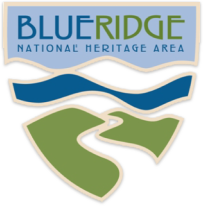
Warriors of AniKituhwa
The Warriors of AniKituhwa are revitalizing Cherokee dance by recreating the War Dance and Eagle Tail Dance as described in 1762. They are painted red and wear clothing and jewelry that are accurate reproductions of 18th century Cherokee styles. Their program includes the War Dance and Eagle Tail Dance along with a discussion of the significance of these dances. They perform Cherokee social dances and include the audience. They also participate in 18th century reenactments.
“We are modern day warriors who are taking a stand to preserve our culture,” said Bo Taylor, lead dancer. The Warriors of AniKituhwa include: Walker Calhoun, singer, Bo Taylor, Bullet Standingdeer, Sonny Ledford, John Grant Jr., Patrick Smith, Daniel Tramper, Hoss Tramper, and Will Tuska. They were designated official Cultural Ambassadors by the Tribal Council of the Eastern Band of Cherokee Indians. New members include Ty Oocumma, David Seay Owle, and Jeremy Sequoyah. The Museum of the Cherokee Indian is their official sponsor.
The group began in 2003 when Tribal Councilwoman Marie Junaluska wanted to offer a welcoming ceremony and dance for visiting tribes and dignitaries. The War Dance was traditionally performed on three different types of occasions: 1) on diplomatic occasions, such as the visit of Lt. Henry Timberlake to the Overhill Towns in 1762 to guarantee peace with the British 2) in the townhouse as an entertainment to raise money for needy families and 3) before going to war, when a special mask was worn to signify the intention of doing battle.
The Warriors of AniKituhwa have performed at Colonial Williamsburg, the National Museum of the American Indian, the opening of “Emissaries of Peace,” the Kissimmee Shoot Off and Rendezvous at the Big Cypress Seminole Reservation, Stone Mountain Park, Mountain Heritage Day, Sequoyah Birthplace Museum Festival, Cherokee Voices Festival, North Carolina State University, Western Carolina University, Warren Wilson College, and the Eastern Frontiers Conference. They dance at the Cherokee schools and football games, and provide workshops for the community on dance and historic clothing based on their research.
They provide a one-hour dance program. Individual dancers can provide performances of flute playing, storytelling, and lectures on Cherokee history, culture, and language. They can also participate in historic reenactments. In addition to a fee for their performance, and their travel and lodging expenses must be covered.



